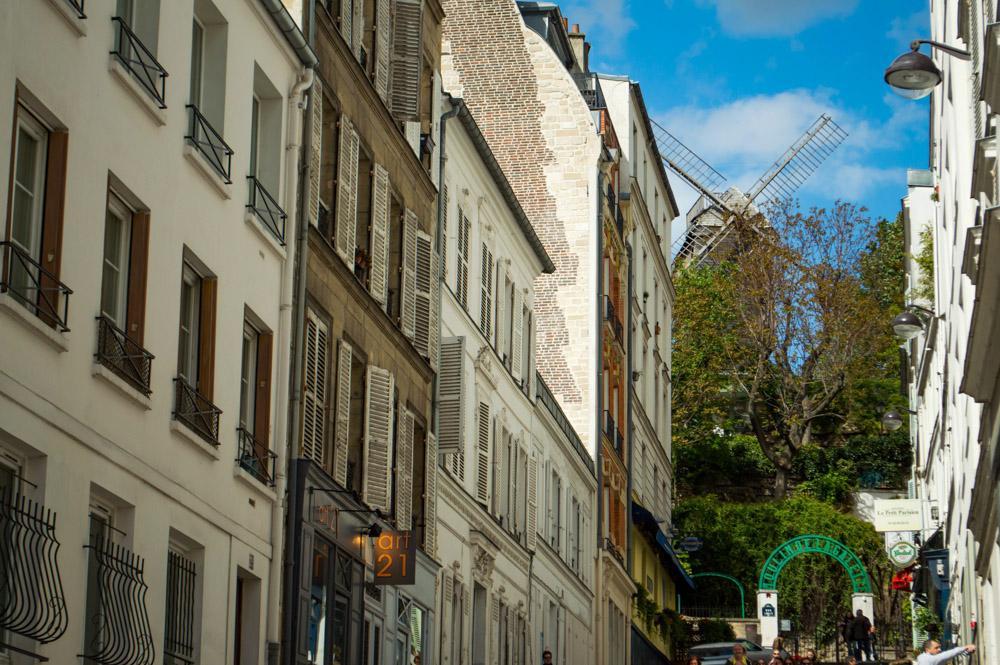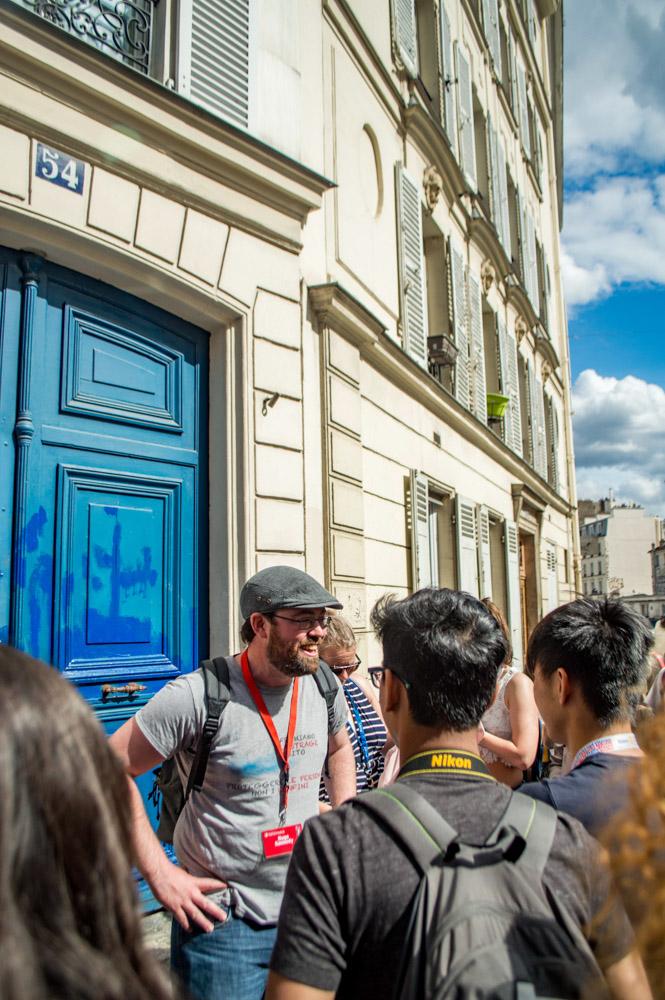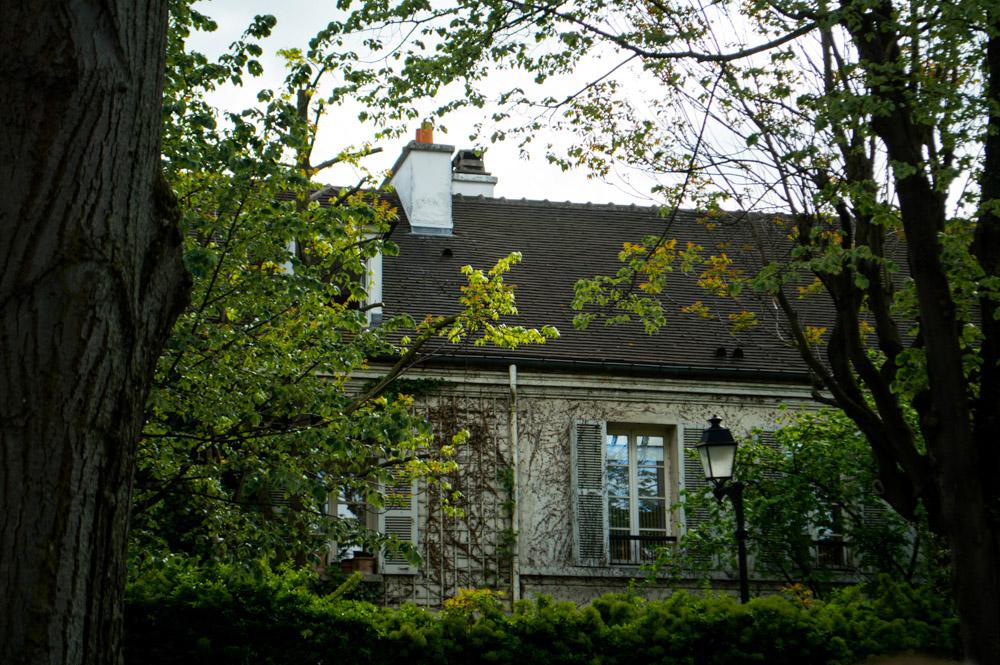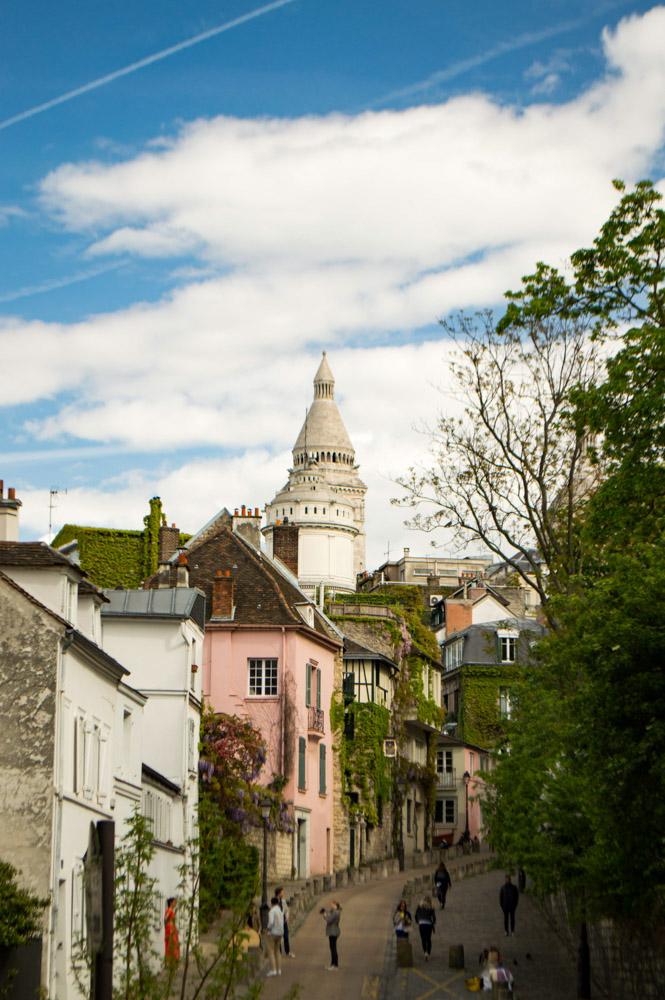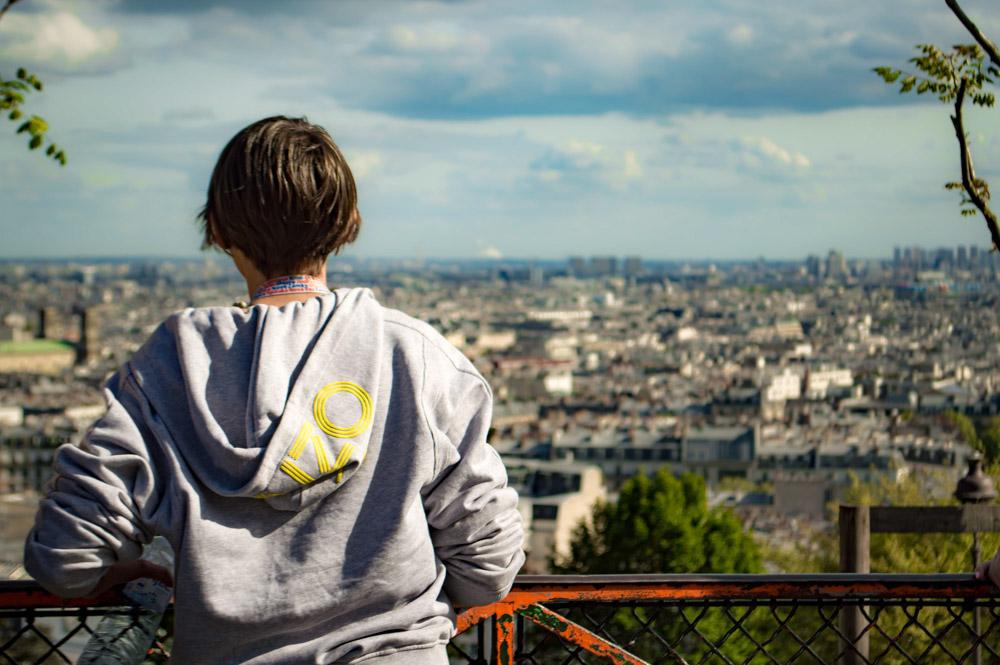Set on a hill outside of Paris’ center, folk legend states the the location got its name when the bishop, Saint Denis, was executed by the Romans there for his christian faith (accordingly, “Mount of the Martyr”). Supposedly, after the executioner’s blade fell, the man stood, picked up his decapitated head and held it to his chest as he continued to preach, walking several miles farther out of the city before finally dropping dead. Saint Denis serves as a patron saint of France, Paris, the possessed… and headaches.
This tale sounds as just about as unlikely as the actual origins of Monmartre’s name are certainly known. In actuality, Monmartre is derived from the old Roman name for the hill, Mons Martis (The Mountain of Mars).
The community which stands now was preceded by a mostly agricultural community. Numerous windmills dotted the hills around Monmartre, though only one still stands today. The rest were burned down during a The Battle of Paris in 1814. It is said that the French farmer who owned the windmill rushed outside when he saw Russian forces approaching. Brandishing a pitchfork, he proclaimed “You’ll get to my mill only over my dead body!” or something of that sort. Well, the Russians obliged and quartered the man, nailing the four separate pieces of his body to different wings of the mill. As brutal as his end was the farmer did, in fact, succeeded in protecting his property. The Russians wanted the quartered body to serve as a message so they left that sole mill standing.
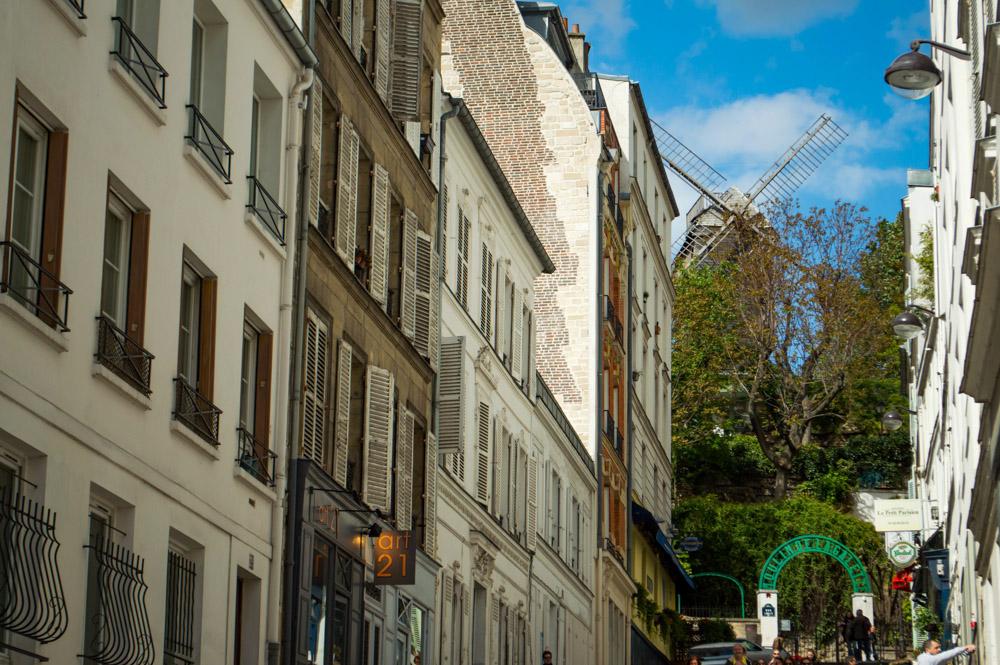
His windmill has since become an icon of the community, making appearances in the works of the likes of Van Gogh and Renoir. It was also the inspiration behind the name of Monmartre’s most infamous attraction, Moulin Rouge. Originally the home of alluring dancers and the birthplace of the can-can, the venue now features performances of all sorts from all over the world, in addition to its traditional program.
The Moulin Rouge was once frequented by the numerous artists who called Monmartre home. The likes of Van Gogh, Renoir, Matisse and Picasso all stayed in Monmartre for some period of their careers.
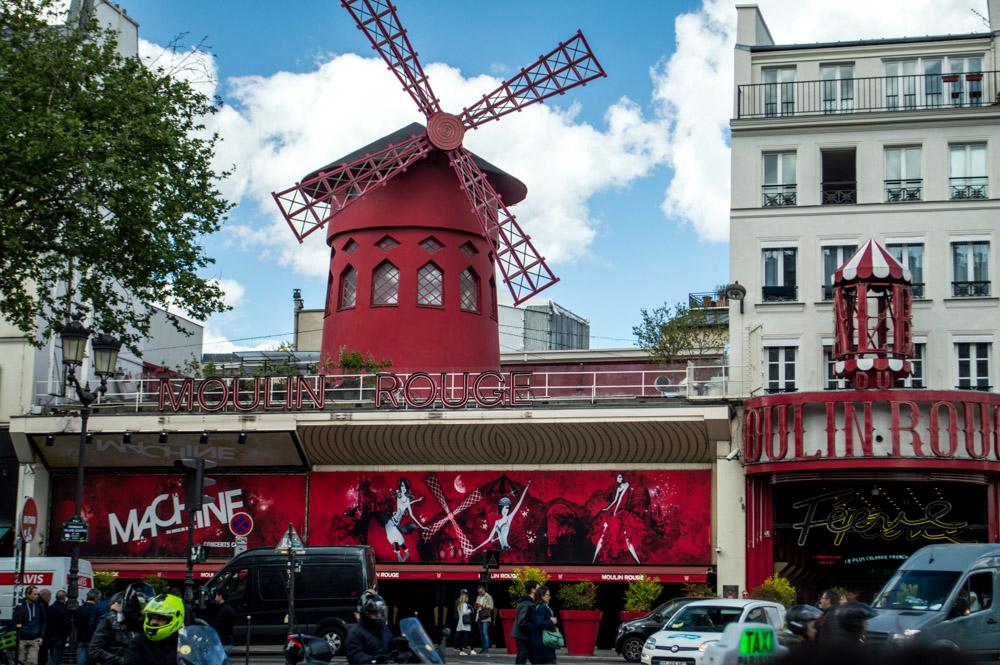
Picasso had a particularly amusing connection to a small cabaret in Monmartre called Au Lapin Agile (The Nimble Rabbit). One day, as the waitress was walking towards him for payment, Picasso realized he had no money on him. In a rush, he pulled a napkin close and began to scribble away with a pen. When the woman gave him his bill, he responded “Oh, what is money compared to beauty such as yours, dear girl. Take this in lieu of payment, a token of my admiration for you.” He handed her the napkin, now featuring a flattering sketch of her. She swooned at the gesture and accepted, charging smooth Picasso not one cent.
Feeling he had stumbled upon a great gig, the artist soon returned to Lapin Agile. He checked that a different waitress was working then sat at a table, now armed with a sketch pad. When his bill came this time, he was prepared. He rattled off the same routine and handed the young lady her sketch. Once again he walked away with a free meal in his belly. Now convinced that he would always have a guaranteed lunch waiting for him, Picasso again returned. Instead of a young lady, however, the restaurant’s furious owner came storming out with three bills in hand. He insisted Picasso pay all three or else. The savvy artist talked him down and managed to strike a deal, “Look, I will paint you something for you. It will be worth a lot one day, I promise.” I can’t imagine the restaurant owner was clairvoyant enough to anticipate the how lucrative his actions would be, but he must’ve figured that even a bad painting was worth more than a few meals and he struck the deal. Au Lapin Agile changed hands several time, but most recently it sold for 40.7 million at an 1989 auction. I hope that restaurant owner got the chance to appreciate his fortune.
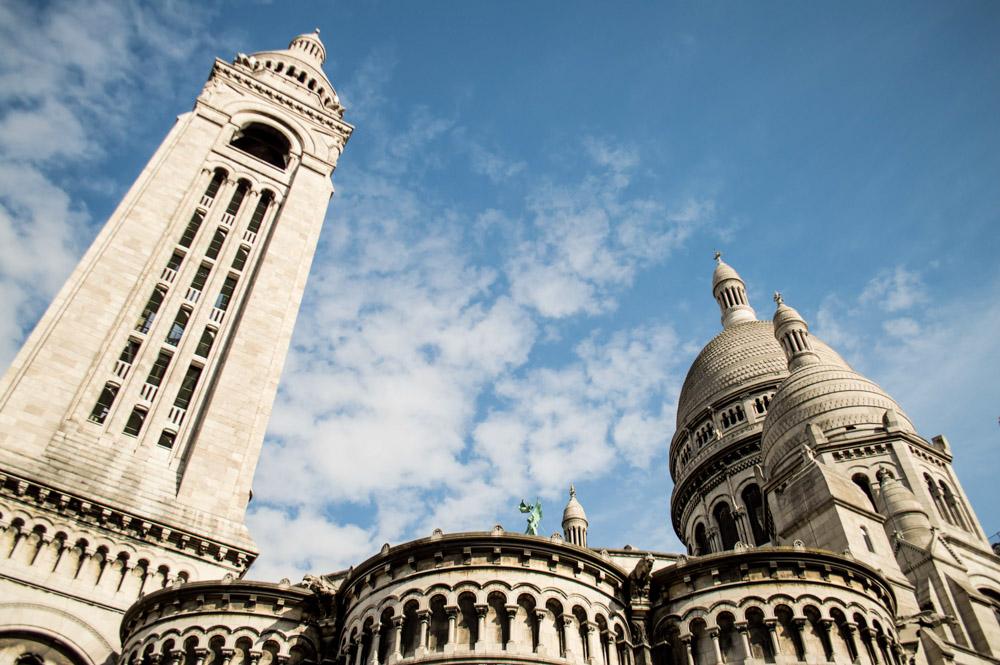
Dominating Monmartre is the Basilica of the Sacred Heart of Jesus, commonly known among the French as Sacré-Cœur. This towering structure is visible for miles, its white exterior glowing in the sun as it crowns Monmartre. The travertine limestone out of which Sacré-Cœur is constructed exudes calcium carbonate where rain hits it, serving as a sort of automatic white wash for the exterior. However, parts from the rain turn black from the pollution of Paris. It was decided to not clean these areas, as the contrast created between the light and dark stone is brilliant.
All of these stories and sights are fascinating, but they fail to capture the essence of Montmartre. Sections of the town are bustling with tourists, but just paces away from the chaos are the quaintest, quietest of Parisian streets. Lined with pastel buildings and little cafes, parks and modern street art. The community retains it historic, artistic identity and has resisted the impersonal atmosphere which pervades most of Paris’ enormity today. It is evident that Montmartre is still today what it was a hundred years ago.
Signed,
Andrew
